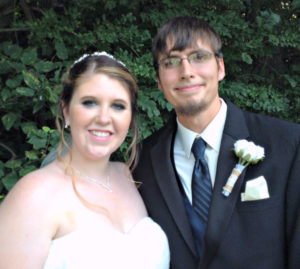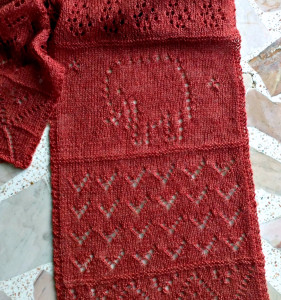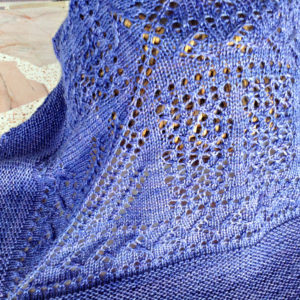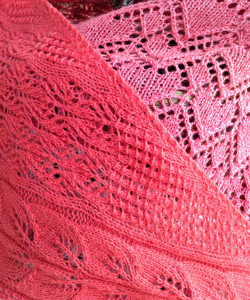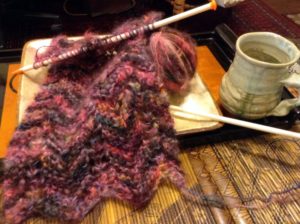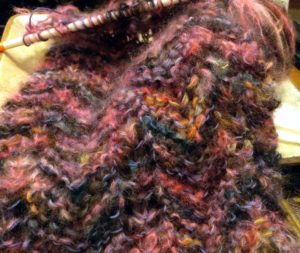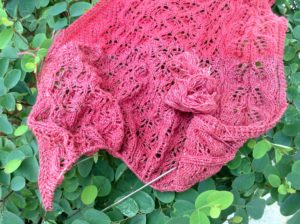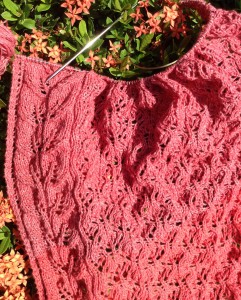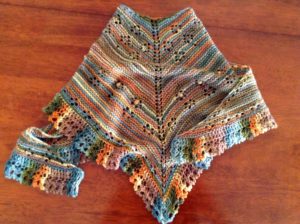
This hand knit reversible heart shaped bandana/shawlette is one of my original – and most popular – designs: Buds and Flowers.
The yarn is a hand-dyed luxury blend that’s 80% fine merino wool and 20% silk. The colorway is called Mountain Moss, and there are 18 6mm sandalwood beads incorporated into a row of the flower pattern.
Wear with the point in front or in back, tie the ends, or add a vintage pin. This is an accessory that’s suitable for casual as well as evening wear.
The accessory measures:
18.5 inches (47cm) from the center of the top to the bottom point
43.5 inches (110.5cm) across at the widest point
47 inches (119.5) measured across the top edge
The accessory is available for purchase in my Etsy shop.

If you’d like to knit your own, the basic pattern is available on Ravelry, and the instructions for this variation are here:
This is a slight variation on the original pattern, using a luxurious blend of merino and silk and adding some 6mm sandalwood beads.
With US4/3.5mm needles the shawlette required a full 113-gram skein (420 yards/385 meters) of Cherry Tree Hill Fingerpaints Superwash Silk Fingering yarn (Mountain Moss colorway).
And I added 18 6mm sandalwood beads in the middle of the flowers across one row.
Dimensions after blocking:
18.5 inches (47cm) from center of top to bottom point
43.5 inches (110.5cm) across at the widest point
47 inches (119.5cm) measured across the top edge
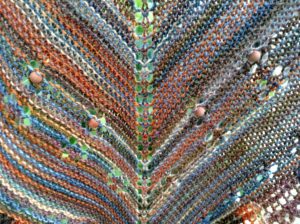
Here are the variations in the instructions if you have this pattern:
Row 69: You’ll see these instructions in parentheses – to be repeated a total of 18 times across the row:
(K2tog, YO, K3, YO, SSK, K3)
On the second K stitch of the K3 group in the middle – in bold above – place a bead and then knit the stitch
Row 109: K across
Then,
With the right side of your work facing you, CO an additional 6 stitches (cable cast-on method recommended):
K5, and then K the 6th stitch together with the next stitch on your left needle. You should have 6 stitches on your right needle and have decreased 1 stitch on your left needle.
Then, work as follows:
Row 1: K1, K2tog, YO, K2, YO twice, K1 (8 stitches)
Row 2: K1, (K1, P1 into double YO), K4, K the next stitch together with the next stitch on your left needle (8 stitches)
Row 3: K1, K2tog, YO, K5 (8 stitches)
Row 4: BO 2 sts, P2tog, YO, K2, K the next stitch together with the next stitch on your left needle (6 stitches)
Repeat these 4 rows to the end
BO
Let me know if you have any questions/need any help.
Happy Knitting!
MikeH


